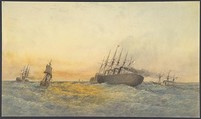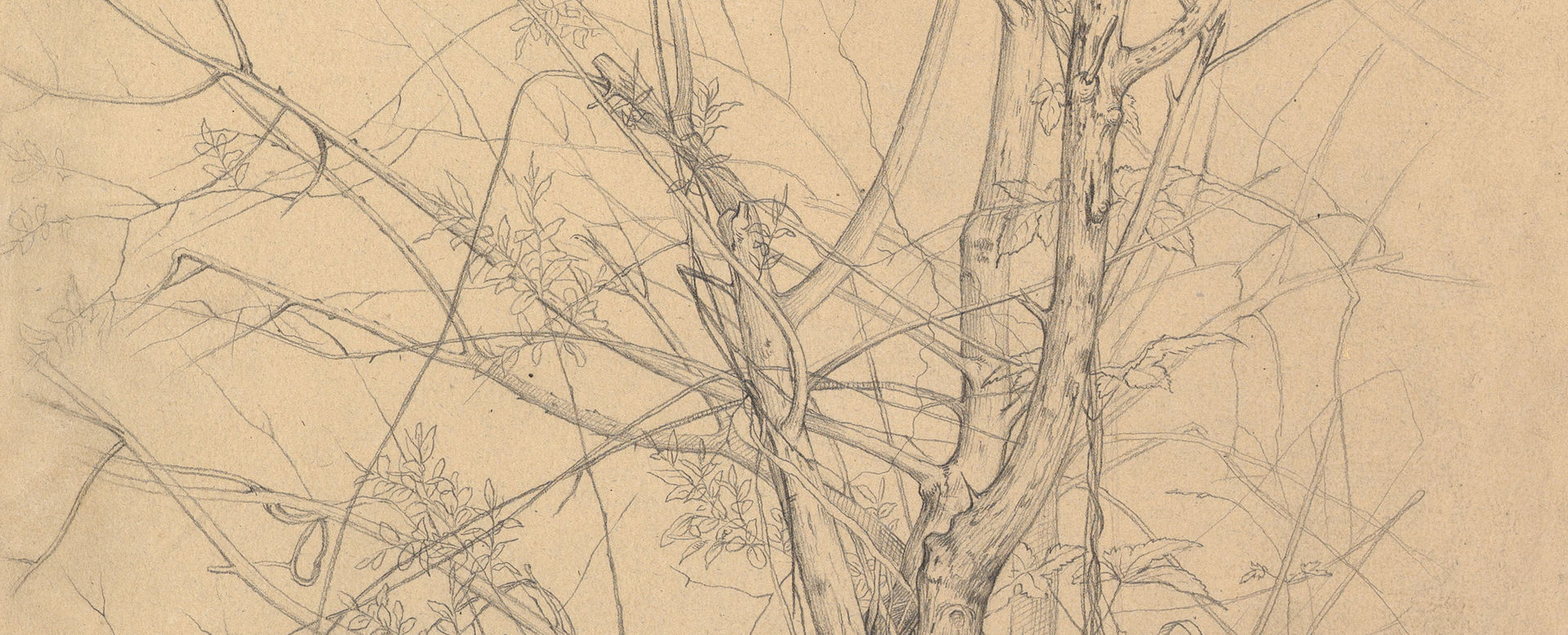The Great Eastern Under Weigh, July 23rd, 1865: Escort and other Ships, H.M.S. Terrible, H.M.S. Sphinx, The Hawk and Revised: The Caroline
Robert Charles Dudley British
Not on view
One of the 19th century's great technological achievements was to lay a telegraphic cable beneath the Atlantic, allowing messages to speed back and forth between North America and Europe in minutes, rather than ten or twelve days by steamer. An initially successful attempt in 1858, led by Cyrus W. Field and financed by the Atlantic Telegraph Company, failed after three weeks. Two working cables were finally laid in July and September 1866, the result of repeated efforts by the indefatigable Field, a cadre of engineers, technicians, and sailors, two groups of financial backers, and significant help from the British and United States navies. Dudley documented the long, arduous process in a series of watercolors and oils, here showing the Great Eastern moving west in 1865, the cable extending from its stern. As the world's largest ship when launched in 1858, the vessel was converted in 1865 to serve the project. In 1892 Field donated art works by Dudley, commemorative medals, memorabilia, and specimens of cable to the Museum.
This image cannot be enlarged, viewed at full screen, or downloaded.



